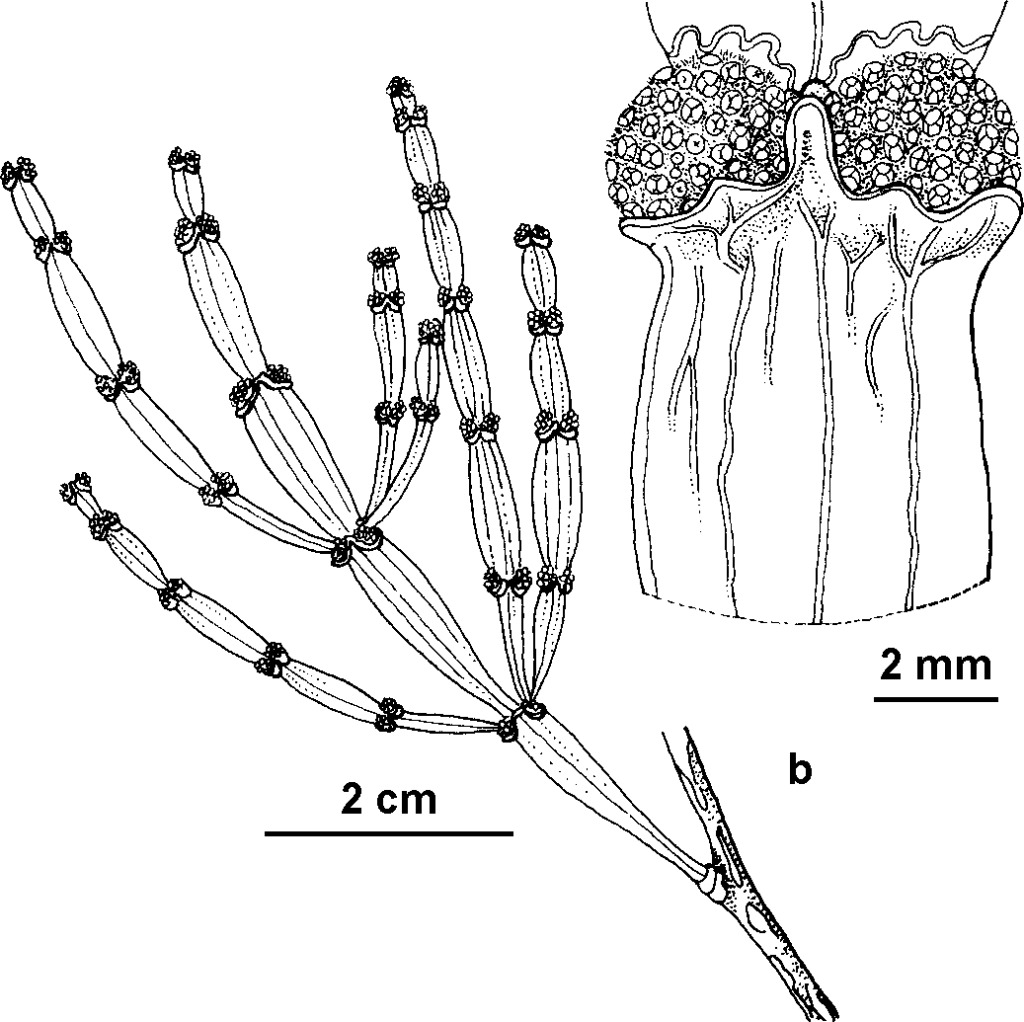Korthalsella
Small aerial subshrubs, stem-parasitic, erect, glabrous; stems green or yellowish, articulated at nodes, terete or compressed (neither in Victoria) or strongly flattened in 1 plane forming a cladode; epicortical runners absent. Leaves opposite, rudimentary, usually distichous, sometimes decussate, forming a border usually less than 1 mm high around flower clusters. Flowers small, developing successively in lateral monoecious clusters, surrounded and separated by multicellular sparsely branched thick-walled hairs which often form a raised mound (floral cushion); first flower axillary, usually male, subsequent flowers developing laterally, usually in rows below the first, mostly female; male flowers globose to obconical, 3-merous; anthers 2-celled, introrse, united into a synandrium with an apical pore; female flowers globular or pyriform, 3-merous. Fruit pyriform or ellipsoid, crowned by persistent tepals.
About 30 species, from Japan through southern Asia, west to Ethiopia, east to Australia, New Zealand and several Pacific archipelagoes; 6 species in Australia.
Jeanes, J.A. (1999). Viscaceae. In: Walsh, N.G.; Entwisle, T.J., Flora of Victoria Vol. 4, Cornaceae to Asteraceae, pp. 45–47. Inkata Press, Melbourne.
 Spinning
Spinning



